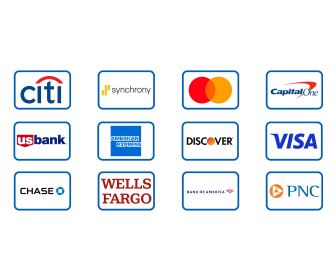Why Your Credit Card APR Is So High — And What You Can Negotiate
Ever wonder why your credit card’s interest rate seems sky-high — even if you have decent credit? You’re not imagining it. As of 2025, the average U.S. credit card APR has climbed above 22%, the highest in decades. Understanding why rates are rising — and how to push back — can save you hundreds of dollars a year in interest charges. Let’s break down the real reasons behind today’s high APRs and what you can actually negotiate with your issuer.
1. The Federal Reserve Effect
Your credit card’s APR isn’t random — it’s tied directly to the Prime Rate, which moves with the Federal Reserve’s interest rate decisions. When the Fed raises rates to fight inflation, your variable APR usually increases within one or two billing cycles. Since early 2022, the Fed has hiked rates more than a dozen times to cool the economy — and banks passed every increase onto cardholders.
That means even responsible borrowers with good credit are now paying 20–28% interest on revolving balances — a painful jump compared to the 15% averages of the 2010s.
2. Risk-Based Pricing (and Profit)
Credit card issuers don’t just base your rate on the Fed — they also use something called risk-based pricing. Every borrower is assigned a “risk tier” depending on credit score, payment history, income, and utilization. Even small changes — like carrying balances above 30% of your limit — can bump you into a higher APR bracket.
And yes, banks profit from that. Interest is the single largest revenue source for credit card issuers, far exceeding rewards costs. So while they’ll advertise “points” and “cash back,” their real money comes from those who carry balances month to month.
3. You Might Be Paying a “Default APR” Without Realizing It
Missed a payment recently? Even once? Most issuers can trigger a “penalty APR” of 29.99% or higher if your payment is late by more than 60 days. This rate can stick for six months or longer, even if you catch up on payments later. Always check your monthly statement for sudden APR changes — they’re often buried in the fine print.
4. What You Can Actually Negotiate
- Ask for a rate reduction: Call your issuer’s customer service line and request a lower APR — especially if you’ve had 12+ months of on-time payments. Many cardholders successfully get 2–5% knocked off just by asking.
- Leverage competing offers: If you’ve received pre-approval letters for cards with lower rates, mention them. Banks don’t like losing good customers to competitors.
- Transfer your balance: Consider a 0% APR balance transfer card to pay off existing debt interest-free for up to 18 months. (Just watch for transfer fees.)
- Negotiate temporary hardship relief: If your high balance is due to job loss or emergency expenses, issuers sometimes offer short-term interest reductions or payment deferrals.
Expert tip: Script your negotiation call. Mention your credit score, years as a customer, and recent payment history. Phrases like “I’m considering transferring my balance” often prompt faster approval for rate reductions.
5. When to Consider a Different Card
If your issuer won’t budge, shop around. Many 2025 cards still offer 0% APR for new purchases or balance transfers for 12–18 months. Look for options from Citi, Wells Fargo, or BankAmericard with no annual fee. Even a few months at 0% can help you pay down balances faster and escape the compounding interest trap.
Final Thoughts
Your APR isn’t set in stone — it’s negotiable. Knowing how rates are calculated gives you leverage, and consistent on-time payments give you power. While 2025’s high-rate environment isn’t your fault, staying proactive is your best defense. If you can’t lower your APR, move your balance, pay strategically, and keep your credit strong enough to command better offers next time.
Not financial advice. APRs vary by credit profile and lender policy. Always confirm official terms with your bank or credit card issuer before making decisions about balance transfers or negotiations.
Continue reading: Credit Cards + Inflation: What You Should Know in 2025 · Is It Better to Pay Off a Credit Card Early or Keep a Low Balance?



